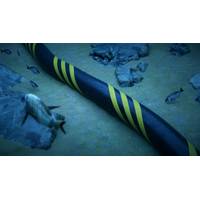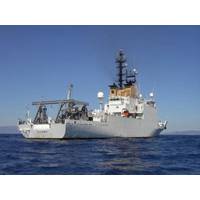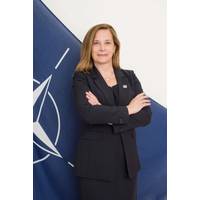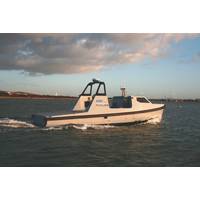
What We Need to Know About Telecommunications Cable Protection
This week at Marine Technology News...No subsea telecommunications cable can be guarded all the time.In response to the most recent suspicious severing of telecommunications cables in the Baltic, NATO's Center for Maritime Research and Experimentation in Italy launched software that will combine private and military data along with input from hydrophones, radars, satellites, vessels' Automatic Identification Systems and the distributed acoustic sensing fibers that are used to localize cuts in cables.All this technology is aimed at determining the cause of damage after the fact.Globally, around

Struggles to Secure Baltic Sea Dominates NATO's 'Freezing Winds '24'
On Nov. 18, hours after two communication cables were severed in the Baltic Sea, 30 NATO vessels and 4,000 military staff took to the same body of water for one of northern Europe's largest naval exercises.The 12-day 'Freezing Winds' drill was part of a push to step up the transatlantic defence alliance's protection of infrastructure in waters that carry 15% of global shipping traffic and are seen as increasingly vulnerable to attack.The Baltic Sea is bordered by eight NATO countries and Russia. There have been at least three incidents of possible sabotage to the 40-odd telecommunication

NATO RV Alliance is not just quiet, it’s ice-capable
An interview with Ian Sage, director for marine operations, NATO Center for Maritime Research and Experimentation, La Spezia, Italy.NATO’s 3,100-ton, 305-foot research vessel NRV Alliance has been a leading platform for underwater acoustics research to the benefit of NATO navies. The ship operated with a civilian crew under the German flag for many years for the NATO SACLANT Center, later renamed the NATO Undersea Research Center, and now known as the NATO Center for Maritime Research and Experimentation. Now Alliance flies a new flag, and has a broader mission. What’s

Interview: Dr. Catherine Warner, Director, NATO CMRE
At CMRE, it’s not just about the science. It’s about building trust and confidence in resilient systems. An interview with Dr. Catherine Warner, Director, NATO Center for Maritime Research and Experimentation, La Spezia, ItalyTell us a little about yourself and CMRE. What does CMRE do, and how do you see your mission evolving?I came here from the Pentagon, where I was the science advisor for the director of operational test and evaluation. My experience has been working with operators on systems that they’re getting ready to field. Now that I’m here at CMRE

NATO employs MUSCLE Memory to Find Mines
Underwater vehicles communicate, make decisions, and work as a teamThe NATO Center for Maritime Research and Experimentation (CMRE) in La Spezia, Italy, is combining smarts and muscle to solve a complex warfighting challenge: finding and destroying mines in the murky waters of the littoral.CMRE has developed experimental unmanned vehicles for experimentation. Now it is evolving those vehicles to communicate and cooperate with each other, and to solve problems on their own.According to CMRE’s director Dr. Catherine Warner, the center is trying to figure out where the unmanned systems best

Tomorrow’s Defense: Unmanned Vehicles Enter the Naval Arena
; Delivering Maritime Capability When the Unmanned Warrior program was completed in line with the U.K. government’s Strategic Defense and Security Review direction on innovation and defense exports, the Royal Navy invited industry, academia and other defense partners, including the U.S. Navy and NATO’s Center for Maritime Research and Experimentation, to safely experiment and demonstrate the potential offered by maritime autonomous systems within the Joint Warrior operational environment, exploring the feasibility of increasing the use of unmanned and autonomous systems in delivering maritime

Will Robots Aid Maritime Search and Rescue?
New ICARUS system ready for use from 2016 The ICARUS European project aims to develop robotic tools to assist crisis intervention teams. Playing a role in developing the maritime component of this project was NATO Center for Maritime Research and Experimentation (CMRE), whose assistance including enhanced autonomy and integration between Unmanned Surface Vehicles and Unmanned Aerial Vehicles. On July 9-10, 2015, at the Portuguese Navy Base of Alfeite (Almada) in Lisbon, 24 Project Partners from nine countries demonstrated the ICARUS (Integrated Components for Assisted Rescue and Unmanned
CMRE Recognized for Robotics Achievements
and the second CMRE Workshop on Military Applications of Glider Technology have just ended in La Spezia. CMRE Glider Team has also recently received the NATO STO Scientific Achievement Award for the high level of the science and technology demonstrated. From October 21-23, the NATO Center for Maritime Research and Experimentation (CMRE) hosted a Workshop where the first results of the REP14-MED scientific campaign conducted in June 2014 in the Sardinian Sea were presented. From October 7-9, the Center hosted as well the second CMRE Workshop on Military Applications of Glider Technology. In September

euRathlon Marine Robot Competitions at CMRE
The NATO Center for Maritime Research and Experimentation (CMRE) has just concluded two intense weeks of student challenges with a multi-domain demonstration. After the Student Autonomous Underwater Vehicle Challenge - Europe (SAUC-E), hosted for the fifth year in a row in CMRE’s sheltered harbor, from September 20 to 26, the first euRathlon sea robotic competition was held in the same venue from September 29 to October 3. Six teams from five universities did participate in euRathlon: ENSTA Bretagne (France) with two teams called SAUC-ISSE and CISSAU; the DFKI GmbH-University of Bremen


 February 2025
February 2025





